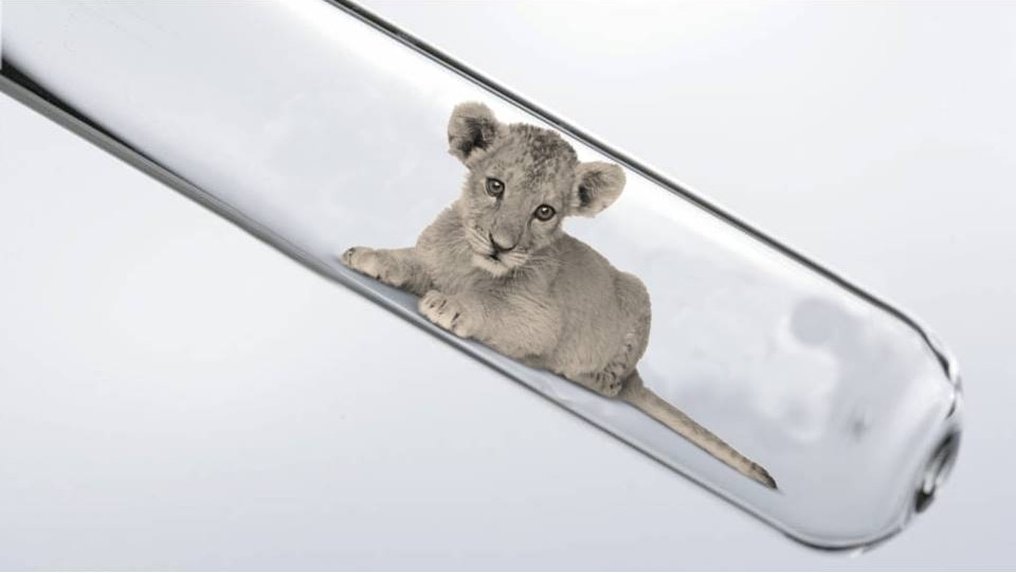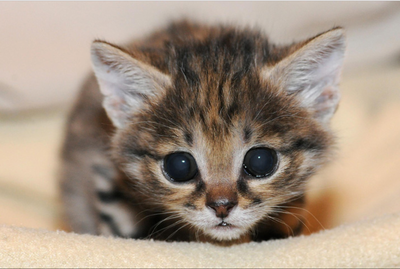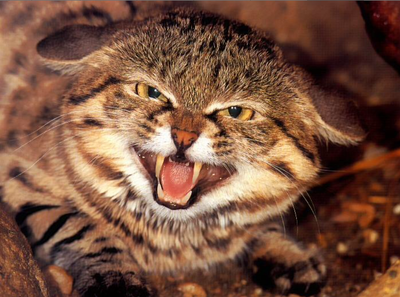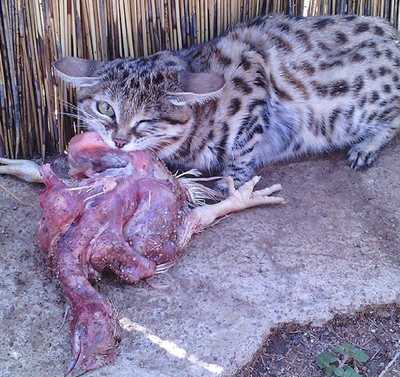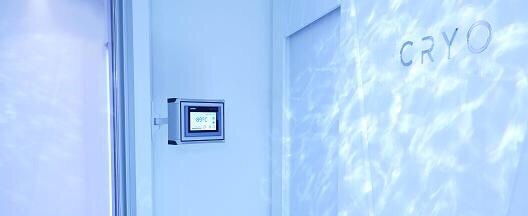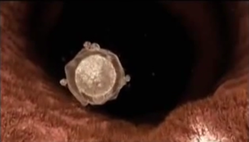survival strategies
"dead is dead and gone if there isn't a backup in the freezer"
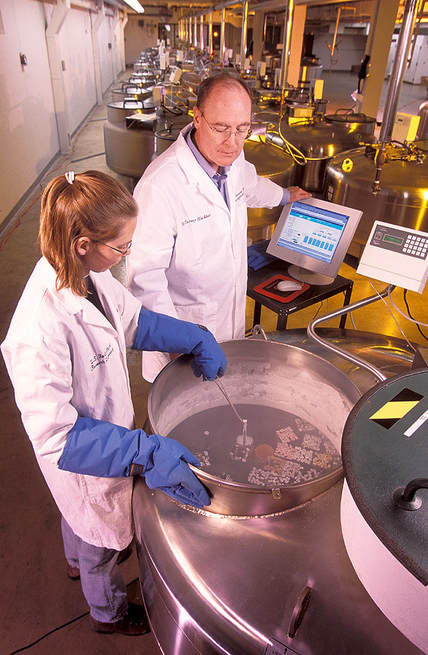 US National Animal Germplasm Program coordinator Harvey Blackburn and technician Ginny Scmit place animal germplasm samples into a liquid nitrogen tank for long-term storage.
US National Animal Germplasm Program coordinator Harvey Blackburn and technician Ginny Scmit place animal germplasm samples into a liquid nitrogen tank for long-term storage.
These are the words of Dr. Harvey Blackburn, US Genetics Scientist at the Agricultural Research Service, located in Fort Collins, Colorado. What he is referring to is the increasing awareness of the critical need for stored DNA from virtually every species on earth. Sperm is being cryogenically frozen and kept in "catastrophe vaults" for the terrible possibility of the final extinction of any species, whether domestic or wild. Perhaps it shocks many to know that this is how serious our predicament has become on planet earth, but this is the new reality. In the United States a specialised department within the Department of Agriculture known as ARS (Agricultural Research Service) is building a collection of sperm and embryos which is the largest in the world. Known as the National Animal Germplasm Collection and located at the Fort Collins location, it is composed mostly of cryogenically frozen sperm and embryos, including nearly a million samples from 26 species of domestic animals. The program recently added the sperm of bees after Washington State University scientist Brandon Hopkins discovered a way of freezing honeybee sperm, in his words, “making it possible not only to create an emergency supply for the repository, but also to breed better bees for the field."
It is this science that is now being applied at Ukutula Conservation Center -"making it possible not only to create an emergency supply for the repository, but also to breed better lions for the field". Indeed, the creation of an emergency supply "vault", at the same time contributing to better DNA distribution for the species world-wide is desired outcome of these efforts.
It is this science that is now being applied at Ukutula Conservation Center -"making it possible not only to create an emergency supply for the repository, but also to breed better lions for the field". Indeed, the creation of an emergency supply "vault", at the same time contributing to better DNA distribution for the species world-wide is desired outcome of these efforts.
participation in joint international scientific studies
Besides the breeding of healthy, happy animals for exchange with other breeders in order to expand the gene pool and avoidance of interbreeding, research has proven that breeding programs alone are not sufficient for the future survival of Big Cats threatened by catastrophic events such as pandemic disease or a climatic disaster. What is needed is a source of diverse genetic material to avoid extinction. The approach at Ukutula is to continue to breed and make available the Big Cat population to researchers with the initial purpose of sperm extraction for retention initially and later for potential reproduction innovation. These studies will be conducted with the vision of building a catastrophe vault for the future threat of extinction whereby healthy genetic material can be stored indefinitely under cryogenic conditions.
"spectacular" ancient natural cryogenics
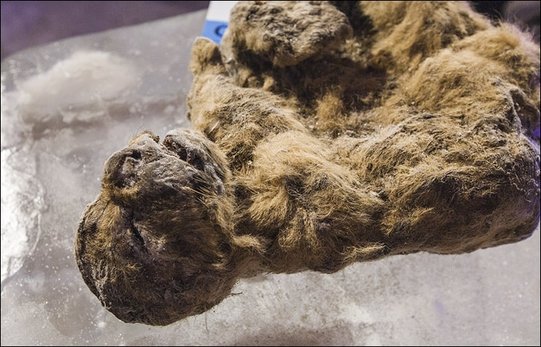 Natural cryo-freezing of two long extinct cave lions
Natural cryo-freezing of two long extinct cave lions
Not since the Woolly Mammoths has there been such an incredibly exciting discovery. Yet most have not even heard of the two extinct cave lion cubs discovered in the permafrost in north eastern Siberia, Russia during early summer of 2015. Maybe it has something to do with the icy (excuse the pun!) international relations that this event has not been given the recognition it deserves?
The Yakutia Academy of Sciences unveiled the two cubs, thought to be Eurasion cave lions (Panthera spelaea) during a press conference where they shared the details of their discovery on November 17, 2015.
The cubs were discovered purely by chance when an area next to a river was exposed after melting, caused by climate change. You can imagine the excitement amongst the observers at the press conference. What were they thinking? Well, remember Dolly the sheep? Not for now. According to the spokesman Protpopov: "I would not talk about cloning now. Our main task here is to decipher the genome and to work with it."
Apparently the next step is for researchers to do Magnetic Resonance Imaging scans together with radiocarbon dating.
The Yakutia Academy of Sciences unveiled the two cubs, thought to be Eurasion cave lions (Panthera spelaea) during a press conference where they shared the details of their discovery on November 17, 2015.
The cubs were discovered purely by chance when an area next to a river was exposed after melting, caused by climate change. You can imagine the excitement amongst the observers at the press conference. What were they thinking? Well, remember Dolly the sheep? Not for now. According to the spokesman Protpopov: "I would not talk about cloning now. Our main task here is to decipher the genome and to work with it."
Apparently the next step is for researchers to do Magnetic Resonance Imaging scans together with radiocarbon dating.
extracting and preserving genetic material for posterity
We like to call this one the Heirloom Gene Project;
"heirloom" : something of special value handed on from one generation to another - Merriam Webster
For decades artificial insemination and the conservation of sperm and ovum have been practised in furtherance of fertility treatments for humans. But not only are reproductive cells important - every genetic sampling including skin cells contains vital genetic coding that can be passed on. The same science applied to humans is now being explored in animals. Ukutula is at the forefront of this exciting and dramatic research where genetic material of special value can be passed from one generation to another.
"It takes genetic resources to attain genetic rescue"
These are the words of Dr. Oliver Ryder, director of genetics at the aptly named San Diego Frozen Zoo (part of the Institute for Conservation Research). This zoo is inhabited by tissue, skin cells and DNA from more than 1,000 different animal species. For almost four and a half decades this research facility has been freezing genetic material, never quite realizing just how valuable these resources could become. Not only do they now hold the potential for curing diseases and disabilities that ail endangered species, but since 2010 scientists have had the ability to create stem cells from genetic matter. Stem cells that can generate any type of cell in the body. About that Dolly the sheep?
Stem cell science can now generate egg and sperm cells that could produce a new animal according to Dr. Ryder. However the Frozen Zoo does not plan to use cloning to bring back now-extinct species. Rather, the strategy is to use cloning to help to add diversity to shrinking gene pools (or as Dr. Ryder calls them "gene puddles") of species that are endangered.
Just how important is all of this? In the words of Dr. Ryder: "For most endangered species, our ability to intervene on their behalf, and make knowledge-based decisions to assist in their sustainability, is confounded by our lack of information about the biology of the species. Having samples to study can reveal aspects of their biology that were hitherto unknown."
Research efforts such as those at the San Diego zoo add further evidence of the incredible importance of captive breeding programs as well as the existence of zoos for the survival of endangered species. An indisputable proof of the need for zoos is that of the Giant Panda. Without the programs in zoos around the world, this precious animal would probably now be extinct. Sadly, the first mammal to become extinct due to climate change could have had better outcome, just like the Panda. If the Bramble Cay Melomys had been rescued from the Great Barrier Reef more than a decade ago and assisted in a captive breeding program, we would not be mourning the extinction of this special and unique animal.
Any true scholar and lover of life would not want to miss the TED Talks video of Dr. Ryder discussing the extinction crisis and the research and success stories of the Frozen Zoo - follow this link: Genetic rescue and biodiversity banking
"heirloom" : something of special value handed on from one generation to another - Merriam Webster
For decades artificial insemination and the conservation of sperm and ovum have been practised in furtherance of fertility treatments for humans. But not only are reproductive cells important - every genetic sampling including skin cells contains vital genetic coding that can be passed on. The same science applied to humans is now being explored in animals. Ukutula is at the forefront of this exciting and dramatic research where genetic material of special value can be passed from one generation to another.
"It takes genetic resources to attain genetic rescue"
These are the words of Dr. Oliver Ryder, director of genetics at the aptly named San Diego Frozen Zoo (part of the Institute for Conservation Research). This zoo is inhabited by tissue, skin cells and DNA from more than 1,000 different animal species. For almost four and a half decades this research facility has been freezing genetic material, never quite realizing just how valuable these resources could become. Not only do they now hold the potential for curing diseases and disabilities that ail endangered species, but since 2010 scientists have had the ability to create stem cells from genetic matter. Stem cells that can generate any type of cell in the body. About that Dolly the sheep?
Stem cell science can now generate egg and sperm cells that could produce a new animal according to Dr. Ryder. However the Frozen Zoo does not plan to use cloning to bring back now-extinct species. Rather, the strategy is to use cloning to help to add diversity to shrinking gene pools (or as Dr. Ryder calls them "gene puddles") of species that are endangered.
Just how important is all of this? In the words of Dr. Ryder: "For most endangered species, our ability to intervene on their behalf, and make knowledge-based decisions to assist in their sustainability, is confounded by our lack of information about the biology of the species. Having samples to study can reveal aspects of their biology that were hitherto unknown."
Research efforts such as those at the San Diego zoo add further evidence of the incredible importance of captive breeding programs as well as the existence of zoos for the survival of endangered species. An indisputable proof of the need for zoos is that of the Giant Panda. Without the programs in zoos around the world, this precious animal would probably now be extinct. Sadly, the first mammal to become extinct due to climate change could have had better outcome, just like the Panda. If the Bramble Cay Melomys had been rescued from the Great Barrier Reef more than a decade ago and assisted in a captive breeding program, we would not be mourning the extinction of this special and unique animal.
Any true scholar and lover of life would not want to miss the TED Talks video of Dr. Ryder discussing the extinction crisis and the research and success stories of the Frozen Zoo - follow this link: Genetic rescue and biodiversity banking
ukutula's role in multi-national research
During 2012 an inaugural conservation study funded jointly by the governments of South Korea and Russia was completed. The research was extensive and required between 70 and 80 lions to be bred over three generations. This was accomplished at Ukutula Conservation Center where a successful breeding program was conducted using white as well as brown lions for a comparative genetic mapping study entitled :
"The tiger genome and comparative analysis with lion and snow leopard genomes"
A truly international study, scientists from the following ten countries participated:
Republic of Korea, China, Russia, USA, Denmark, Saudi Arabia, South Africa, Namibia, Mongolia and the Netherlands.
The study describes in detail the very first-ever tiger genome sequence (complete set of DNA, including all of its genes at a single time, together with explanatory notes) as well as a comparative analysis of the lion (panthera leo) and snow leopard (panthera uncia) genomes.
Interesting things were discovered. Amongst the key findings was the genetic mechanism that leads to the white skin colour. In both the white lion and the white tiger an amino acid was identified that was absent in other animals.
Another fascinating finding was that of the tiger genome - it has a particularly enriched olfactory receptor activity (in plain language, highly developed cell membranes in the nostril), explaining the particularly acute sense of smell in the tiger.
The research in this Paper has established a basis for future genetic research and will be key to future preservation of these majestic creatures, both in the wild and in captivity.
"The tiger genome and comparative analysis with lion and snow leopard genomes"
A truly international study, scientists from the following ten countries participated:
Republic of Korea, China, Russia, USA, Denmark, Saudi Arabia, South Africa, Namibia, Mongolia and the Netherlands.
The study describes in detail the very first-ever tiger genome sequence (complete set of DNA, including all of its genes at a single time, together with explanatory notes) as well as a comparative analysis of the lion (panthera leo) and snow leopard (panthera uncia) genomes.
Interesting things were discovered. Amongst the key findings was the genetic mechanism that leads to the white skin colour. In both the white lion and the white tiger an amino acid was identified that was absent in other animals.
Another fascinating finding was that of the tiger genome - it has a particularly enriched olfactory receptor activity (in plain language, highly developed cell membranes in the nostril), explaining the particularly acute sense of smell in the tiger.
The research in this Paper has established a basis for future genetic research and will be key to future preservation of these majestic creatures, both in the wild and in captivity.
gigantic event, tiny cat
As small as what these cats are, they are incredibly feisty. The chicken eating female in the photo lost an eye in a fight with another Black-footed cat before coming to Ukutula.
A momentous precedent was set for the future of all endangered species on February 12, 2012. A Black-Footed cat kitten was born to a domestic cat, becoming the first of its kind to be born from and inter-species embryo transfer. This birth was significant in that the kitten was the first of its species to be born as a result of in-vitro fertilization using frozen and thawed sperm and frozen and thawed embryos. Nine years earlier, in 2003, the sperm was collected from a male at the Henry Doorly Zoo Center for Conservation and Research in Omaha Nebraska, frozen in liquid nitrogen and transported to the New Orleans Audubon Center for Research of Endangered Species. Two years later in March of 2005, this sperm was thawed and combined with eggs from a female at the Audubon Center using in-vitro fertilization. The procedure yielded a total of 11 embryos which were then cryo-preserved.
In December of 2011, nearly seven years later, five of the preserved embryos were thawed and transferred to a domestic cat. The pregnancy resulted in the first of its species to be born to a different species surrogate mother using cryo-preserved sperm and embryo. The kitten was born healthy and naturally 67 days later.
In December of 2011, nearly seven years later, five of the preserved embryos were thawed and transferred to a domestic cat. The pregnancy resulted in the first of its species to be born to a different species surrogate mother using cryo-preserved sperm and embryo. The kitten was born healthy and naturally 67 days later.
"We are proving this science works. We can provide high-tech options for many different species as the situation grows more and more critical for wildlife across the globe" Ron Forman - Audubon Nature Institute
GEOlifes - pioneering animal reproduction and fertility research at Ukutula Conservation Center
One of the organisations that has been at the forefront of research at Ukutula is GEOlifes, a veterinary service organisation and pioneer of Animal Reproduction and Fertility Research, based in Hamburg, Germany. Dr. Imke Lüders has established a reputation for expertise in reproduction and assisted reproduction technologies (ART) for conservation of threatened and endangered mammals. Fertility and reproductive studies are conducted in cooperation with partner scientists, zoos and universities in Europe, Canada, Japan and South Africa.
Computer assisted sperm analysis (CASA) has improved evaluation of sperm quality applied to new techniques of artificial insemination. Previously it was discovered that existing methods of extraction were damaging to the quality of semen. Experimentation has also opened up various different freezing protocols for sperm, in addition to optimised use of anaesthetics in sedation. Research to date has been conducted in collaboration with academics from the University of the Western Cape, South Africa, the National Zoological Gardens in Pretoria, South Africa, and the Institute of Zoo and Wildlife Research in Berlin, Germany.
The ongoing wildlife conservation breeding research at Ukutula is additionally supported by an alliance of local and international veterinary scientists under the umbrella of Pro FETURA e.v., a German based NGO. The scientists of Pro FETURA are convinced that captive breeding of endangered mammal species may be the only opportunity available for survival. Please be sure to familiarise yourself with the great work these scientists are doing by clicking on the orange link above.
Computer assisted sperm analysis (CASA) has improved evaluation of sperm quality applied to new techniques of artificial insemination. Previously it was discovered that existing methods of extraction were damaging to the quality of semen. Experimentation has also opened up various different freezing protocols for sperm, in addition to optimised use of anaesthetics in sedation. Research to date has been conducted in collaboration with academics from the University of the Western Cape, South Africa, the National Zoological Gardens in Pretoria, South Africa, and the Institute of Zoo and Wildlife Research in Berlin, Germany.
The ongoing wildlife conservation breeding research at Ukutula is additionally supported by an alliance of local and international veterinary scientists under the umbrella of Pro FETURA e.v., a German based NGO. The scientists of Pro FETURA are convinced that captive breeding of endangered mammal species may be the only opportunity available for survival. Please be sure to familiarise yourself with the great work these scientists are doing by clicking on the orange link above.
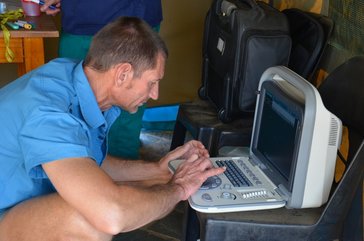
Ongoing Veterinary assistance is being rendered by Dr. Gerhardus Scheepers, an expert in wildlife veterinary science at the Zodiac Animal Clinic in Brits, South Africa.
Ongoing Reproductive study - this must watch video explains efforts to preserve the lion
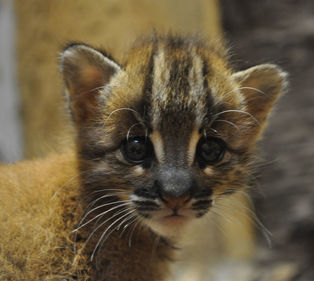 Asian Golden Cat - a breeding success story
Asian Golden Cat - a breeding success story
GeoLifes, Ukutula Conservation Centre and the Asiatic Golden Cat
The Asiatic Golden Cat is a rare and solitary cat that is in danger of extinction due to man - habitat destruction and relentless fur trade has decimated populations. Just over 50 can be found in captivity Europe and Asia. The problem with this species is that breeding them naturally can be perilous to their very lives.
These cats are extremely vicious with one another and often have been known to kill one another during the mating process, as well as cannibalising their young.
Females average about 19 lbs (9 kg) in weight whilst the males are considerably larger at 35 lbs (16 kg), so you can imagine how unfair and dangerous any physical altercation would be!
As can be imagined, every remaining cat is precious. Therefore, the semen collection studies done on cheetahs and lions at Ukutula by GeoLifes has been extremely valuable in ensuring the continued existence of the Asian Golden Cat. The little kitten reflected in this picture, being one of the first of its kind to be born as a result of artificial insemination under the auspices of Dr. Lüders.
The Asiatic Golden Cat is a rare and solitary cat that is in danger of extinction due to man - habitat destruction and relentless fur trade has decimated populations. Just over 50 can be found in captivity Europe and Asia. The problem with this species is that breeding them naturally can be perilous to their very lives.
These cats are extremely vicious with one another and often have been known to kill one another during the mating process, as well as cannibalising their young.
Females average about 19 lbs (9 kg) in weight whilst the males are considerably larger at 35 lbs (16 kg), so you can imagine how unfair and dangerous any physical altercation would be!
As can be imagined, every remaining cat is precious. Therefore, the semen collection studies done on cheetahs and lions at Ukutula by GeoLifes has been extremely valuable in ensuring the continued existence of the Asian Golden Cat. The little kitten reflected in this picture, being one of the first of its kind to be born as a result of artificial insemination under the auspices of Dr. Lüders.
a new chapter
biomaterial bank and laboratory
As mentioned on our home page, perhaps the most exciting development of the past decade at Ukutula Conservation Center is the establishment of the new high-tech BioBank laboratory. This fully equipped laboratory will enable preservation of DNA in a liquid nitrogen cryo-bank. In the future, it will allow for use of the collected genetic material to prevent endangered species from becoming extinct, with many additional potential scientific applications as research develops. Already, the investment in this facility has reached almost ZAR 2.8 million. There are very few of these facilities in the world - this is truly history in the making in Africa!
The official launch was held on February 17, 2017 and was attended by close to 100 guests and dignitaries. Dr. Imke Lueders, one of the chief scientists in the Ukutula project highlighted pertinent facts relating to the necessity of this project in view of the rapidly diminishing species populations of many endangered species. Dr. Lueders highlighted the fact that preservation of genetic material was only viable as long as the populations of the species were still large enough in number. For example, it is probably too late for the Northern White Rhino (3 left), the Arabian Cheetah (25 left), the Amur leopard (maybe 40 left), Cat Ba Langur (50 left), Java rhino (60 left) due to the very limited genetic diversity. The animals at Ukutula Conservation Center are therefore excellent species samples for this science.
The kinds of genetic material that will be stored at the new Biobank are: extracted DNA, blood cells, stem cells, fibroblasts, body fluids, sperm, oocytes, embryos as well as future applications that may still become apparent as the science as advances.
The greatest future benefit of genetic research will be the ability to exchange genetics around the world rather than the tremendous logistical challenge of live animals.
We have posted some of the pictures from this special day on our "Biobank Launch" page. You can access the page directly by clicking on the highlighted words in the previous sentence.
The official launch was held on February 17, 2017 and was attended by close to 100 guests and dignitaries. Dr. Imke Lueders, one of the chief scientists in the Ukutula project highlighted pertinent facts relating to the necessity of this project in view of the rapidly diminishing species populations of many endangered species. Dr. Lueders highlighted the fact that preservation of genetic material was only viable as long as the populations of the species were still large enough in number. For example, it is probably too late for the Northern White Rhino (3 left), the Arabian Cheetah (25 left), the Amur leopard (maybe 40 left), Cat Ba Langur (50 left), Java rhino (60 left) due to the very limited genetic diversity. The animals at Ukutula Conservation Center are therefore excellent species samples for this science.
The kinds of genetic material that will be stored at the new Biobank are: extracted DNA, blood cells, stem cells, fibroblasts, body fluids, sperm, oocytes, embryos as well as future applications that may still become apparent as the science as advances.
The greatest future benefit of genetic research will be the ability to exchange genetics around the world rather than the tremendous logistical challenge of live animals.
We have posted some of the pictures from this special day on our "Biobank Launch" page. You can access the page directly by clicking on the highlighted words in the previous sentence.
a dream becomes reality - see the video below
volunteering in good company
In 2013 National Geographic released a documentary "In the womb" filmed partially at Ukutula. This is not the first filming at Ukutula by National Geographic, reflecting recognition of the high standards of animal care at the Conservation Centre.
